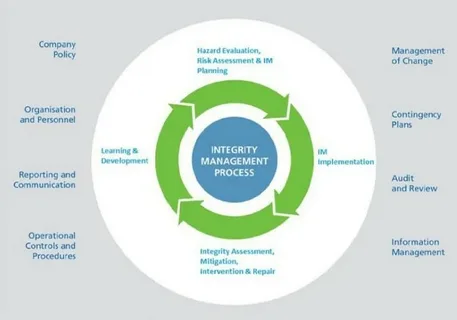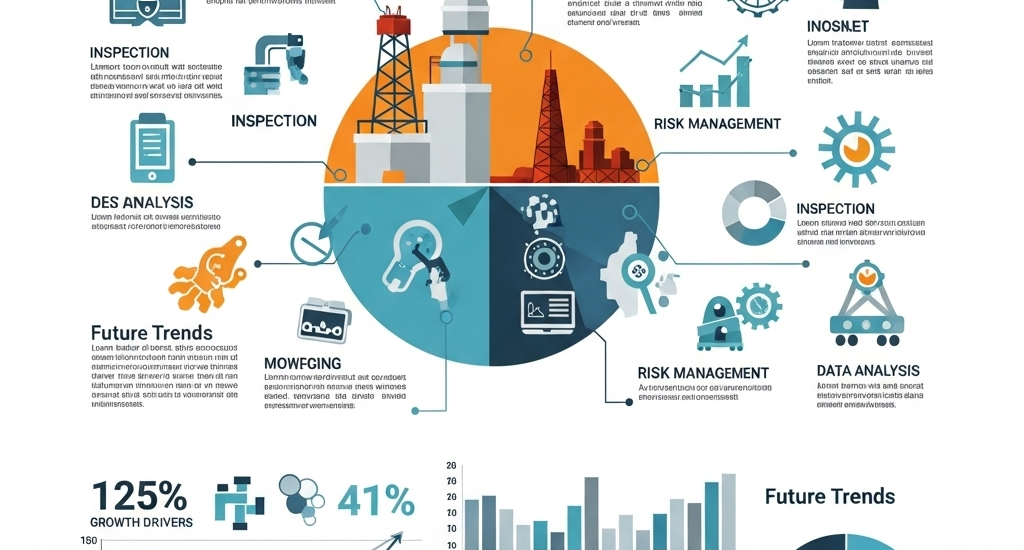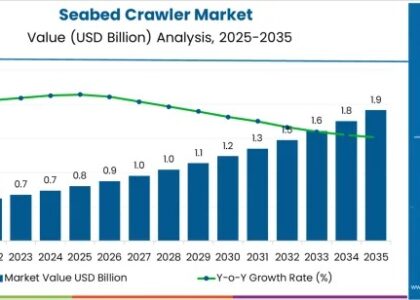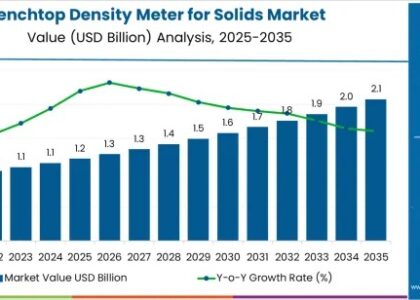The assessment estimates that the market will achieve an approximate valuation of USD 45.0 Billion by 2035, with a CAGR of 4.8% over the forecast period. Leading factors behind this growth are stringent government regulations related to the safety of workplaces, growing acceptance of solutions related to digital assets management, and the increasing demand for affordable maintenance procedures.
In industries where uptime is critical and failure can mean catastrophic loss, there’s an entire ecosystem working behind the scenes—not to build, but to preserve. That system is Asset Integrity Management (AIM), and though it rarely makes headlines, it is the silent force sustaining the world’s energy grids, transportation networks, manufacturing lines, and critical infrastructure.
AIM isn’t about visible progress—it’s about consistent performance. From offshore rigs and pipelines to power plants and chemical facilities, AIM ensures that assets not only meet safety and regulatory requirements but continue to perform reliably over decades of operation.
Get Ahead with Our Report: Request Your Sample Now!
https://www.futuremarketinsights.com/reports/sample/rep-gb-18648
Beyond Maintenance: The Science of Sustained Performance
Asset Integrity Management goes far beyond routine inspections or preventive repairs. It’s a multidisciplinary approach that blends engineering, data analytics, risk assessment, and lifecycle planning to predict failures before they happen and optimize asset performance in real time.
It’s not just about fixing what breaks—it’s about understanding why it might break, when it might happen, and how to stop it without interrupting operations. This approach transforms traditional maintenance into a predictive, proactive, and highly strategic process.
Overshadowed by Innovation, Anchoring the Foundation
While industries chase digital transformation, automation, and AI, AIM often works quietly in the background. Yet none of those innovations can function without reliable physical infrastructure. AIM is the foundation that keeps high-tech systems running—ensuring turbines don’t seize, pipelines don’t rupture, and production lines don’t stall.
As digital tools become more advanced, AIM is evolving in parallel—using sensors, drones, machine learning, and digital twins to enable smarter inspections, real-time condition monitoring, and data-driven decision-making.

From Compliance to Competitive Advantage
Regulatory compliance has long been a driver for asset integrity, especially in sectors like oil & gas, power generation, and transportation. But modern AIM is about more than ticking boxes—it’s about unlocking operational efficiency, extending asset life, and minimizing unplanned downtime.
Companies are increasingly viewing AIM not as a cost center, but as a competitive differentiator. The ability to run assets safely, longer, and at higher performance is becoming a core part of operational strategy in capital-intensive industries.
The Digital Shift in Integrity
Today’s AIM strategies are built on data. Advanced sensors track vibration, corrosion, pressure, and temperature in real time. Cloud platforms and AI tools analyze this data to detect anomalies, assess risk, and prioritize interventions. This shift toward predictive and prescriptive maintenance is redefining how companies allocate resources and respond to threats.
Digital twins—virtual replicas of physical assets—allow engineers to simulate degradation, test scenarios, and validate changes before making real-world decisions. With these tools, integrity management becomes more agile, cost-effective, and scalable.
Exhaustive Market Report: A Complete Study
https://www.futuremarketinsights.com/reports/asset-integrity-management-market
Safeguarding Sustainability and Reputation
As environmental, social, and governance (ESG) standards rise, the stakes for asset integrity have never been higher. A single failure can cause environmental damage, regulatory fines, reputational loss, or even loss of life. AIM directly supports sustainability goals by preventing leaks, emissions, and hazardous incidents.
It also builds public and stakeholder trust—ensuring that the infrastructure supporting modern life is not just efficient, but safe, transparent, and responsibly maintained.
The Silent Backbone of Industrial Resilience
You won’t see a ribbon-cutting ceremony for a corrosion monitoring system or a predictive analytics platform. But those systems are the reason pipelines don’t fail, bridges don’t collapse, and factories don’t go dark. Asset Integrity Management doesn’t celebrate success with noise—it proves it through silence.
Ignore AIM, and systems degrade silently until they fail spectacularly. Invest in it, and industries achieve a rare combination of safety, reliability, and operational excellence. In the world of heavy assets, integrity isn’t just a trait—it’s a system. And that system is always working, even when no one is watching.






